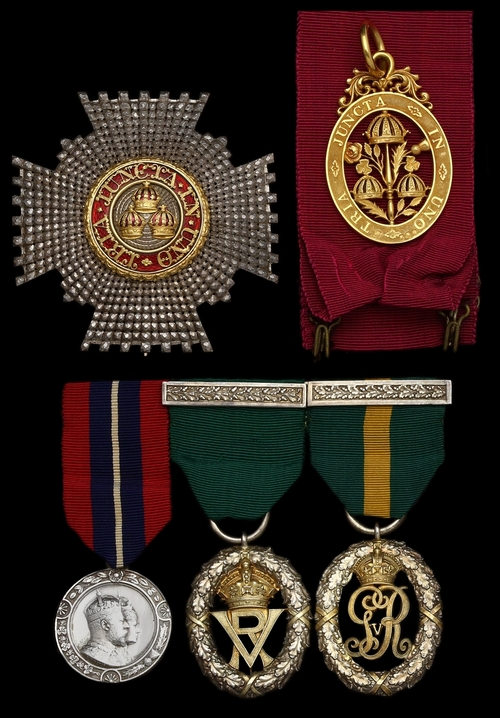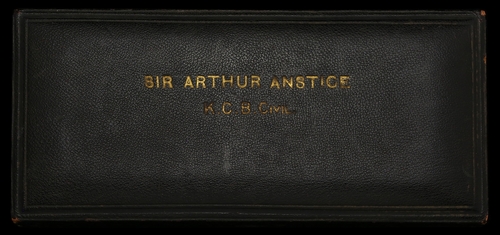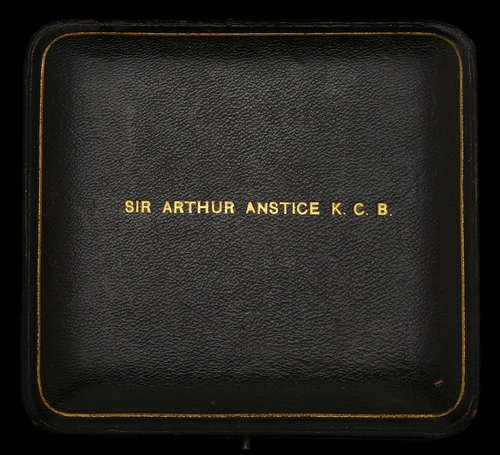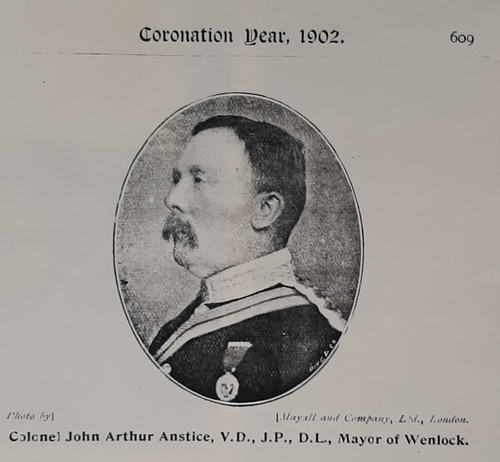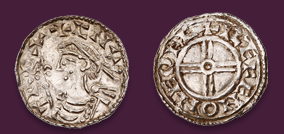Auction: 25002 - Orders, Decorations and Medals
Lot: 121
A gold K.C.B. (Civil) group of five attributed to Sir Arthur Anstice, J.P., D.L., Chairman of the Gloucestershire Territorial Force Association and Hon. Colonel of the 4th Battalion, King's Shropshire Light Infantry
The Most Honourable Order of the Bath, Civil Division, Knight Commander's (K.C.B.) set of Insignia, comprising neck Badge, gold, hallmarks for London 1887; breast Star, silver, with gold and enamel applique centre, with neck cravat, in Garrard, London case of issue, the lid with gilt title 'Sir Arthur Anstice'; Mayors' and Provosts' Coronation 1902; Volunteer Decoration, V.R., hallmarks for London 1892; Territorial Decoration, G.V.R., hallmarks for London 1919, mounted as worn on a Spink & Son wearing pin and contained in a leather case with gilt lid inscription, 'Sir Arthur Anstice, K.C.B.', good very fine (5)
K.C.B. London Gazette 25 June 1909.
John Arthur Anstice was born on 24 January 1846, the son of John Anstice, J.P., of Madeley Wood Hall, Salop.
Educated at Trinity College, Oxford, he became a man of many parts, serving as a Justice of the Peace and Deputy Lieutenant for Shropshire and Gloucestershire and as a High Sheriff for Gloucestershire, in addition to holding the office of Mayor of Wenlock on six occasions. Here, then, the grounds for the award of his Mayors' Coronation Medal in 1902.
But he was also a stalwart of the Volunteer Force and Territorial Army, having served in - and been appointed Honorary Colonel of - the 4th Battalion, Shropshire Light Infantry. Awarded the Volunteer Decoration (London Gazette 13 December 1892, refers), he subsequently added the Territorial Decoration (London Gazette 14 January 1920, refers) to his accolades, thereby becoming one of a handful of recipients of both awards: in fact, his overall combination of awards is quite likely unique.
Having been awarded the C.B. (Civil) in June 1904, he was elevated to K.C.B. (Civil) in June 1909. Anstice - who clearly preferred using his second given name - died in Dymock, Gloucestershire, in August 1929; sold with copied research.
Subject to 20% VAT on Buyer’s Premium. For more information please view Terms and Conditions for Buyers.
Sold for
£2,500
Starting price
£1200

